Imagine walking into a store that looks absolutely gorgeous…Stylish decorations, an inviting entrance, and a product display that promises so much.
But the moment you step inside… it all falls apart. The signs are confusing, the checkout counter is nowhere to be found, and the layout makes no sense.
Frustrated, you turn around and leave.
This is exactly what happens when a website has bad UI/UX design.
It doesn’t matter how amazing your product or service is, if your website is a maze, visitors won’t stick around.
And guess what? They won’t just leave, they’ll remember the frustration and carry a negative impression of your brand.

A well-designed UI/UX experience isn’t just about looking pretty, it’s about functionality, clarity, and ease of use. When done right, it guides users effortlessly, turning them into customers.
But here’s the thing…
Businesses keep making the same 7 critical UI/UX mistakes that wreck user experience, boost bounce rates, and slaughter conversions.
Let’s break them down, one by one, so you can fix them before they cost you more sales!
UI/UX Pitfalls You’re Probably Overlooking (And How to Fix Them)
- You’re Making Users Think Too Much
- Your Mobile UI UX Experience Sucks
- You’re Overloading Users with Visual Clutter
- Your Website UI UX Is Too Slow (Users Won’t Wait)
- Your Forms Are a UI UX Nightmare
- You’re Ignoring UI UX Accessibility
- You Assume Instead of Testing Your UI UX
1. You’re Making Users Think Too Much

A good UI/UX design should feel effortless. The moment users land on your site, they should instantly know:
- What your website is about
- Where they need to go next
- How to complete an action (like buying, signing up, or contacting you)
If they have to figure out how to navigate your site, that’s a red flag. And if they feel confused for even a few seconds? They’ll leave without buying, signing up, or engaging.
Why This Happens
Many businesses fall into the trap of over-complicating their website layout. They try to be creative with unique menu structures, abstract labels, or hidden navigation options, thinking it makes their brand look modern and innovative.
But here’s the truth: Users don’t want to figure things out.
Think about Amazon, Apple, or Netflix.
Their websites are simple, clear, and predictable. Visitors know exactly where things are and what actions to take, no guesswork.



Now, compare that to websites that use vague menu labels like:
- “Explore” instead of “Shop”
- “Learn” instead of “About Us”
- “Go” instead of “Get Started”
Creative? Maybe. But unclear? Absolutely. Users shouldn’t have to wonder, What does this even mean?
The Consequences of Over-Complicated UI/UX
A confusing website doesn’t just annoy, it hits your wallet. Studies show:
⚡ A 1-second delay in page load can cut conversions by 7%.
⚡ 88% of users won’t return to a site after a poor user experience.
⚡ Businesses with well-designed UI/UX can see conversion rates soar by up to 200%!
Case Study: Clarity That Boosts Conversions

In a famous UI/UX case study, Mozilla Firefox improved its donation page UI/UX by making a simple change.
They replaced vague button labels like “Continue” with clear action-driven phrases like “Donate Now.”
The result? A 30% increase in donations.

How to Fix It
- Simplify your navigation. Stick to standard menu structures. Users shouldn’t have to guess where to click. Users expect to see a clear Home, About, Services, Contact section.
- Use clear, action-driven buttons. Instead of “Click Here,” use “Get Your Free Quote” or “Start Your Trial.”
- Structure your content for easy scanning. No giant blocks of text. Most users skim, so use clear headings, short paragraphs, and bullet points when necessary.
A well-structured UI UX experience should guide users effortlessly, not make them struggle to find what they need.
Remember: Every extra second a user spends “figuring things out” is a second closer to them clicking away.

2. Your Mobile UI UX Experience Sucks

Did you know 60% of web traffic comes from mobile?
If your UI/UX design isn’t optimized for mobile, you’re losing over half your visitors. Literally.
🚨 Reality check:
- 57% of users won’t recommend a business with a poorly designed mobile site.
- Google ranks mobile-friendly sites higher in search results.
- Users expect mobile experiences to be as good (or better) than desktop.
- If a user struggles to tap buttons, navigate, or read text? They’re outta there.
A bad mobile UI/UX design means lost customers, lower rankings, and high bounce rates.
But many businesses still overlook their mobile design, making mistakes like:
❌ Text is too small – If users have to zoom in, your site isn’t mobile-friendly.
❌ Buttons are too close together – Frustrating accidental taps = users leave.
❌ Slow loading speed due to oversized images or excessive code – A 1-second delay reduces conversions by 7%.
❌ Poor readability – Dark text on dark backgrounds or tiny fonts create a bad UI/UX experience.

Real-World Example: How Bad Mobile UI/UX Costs Sales
Google ran a study on mobile user behavior, and the results were jaw-dropping:
- 53% of mobile users abandon a site if it takes longer than 3 seconds to load.
- 91% of users say that a good mobile experience makes them more likely to buy.
Now, picture this:
You’re running an eCommerce business. A potential customer is browsing your site on their phone, eyeing a product. But your checkout button is too small, and your cart page is slow.
Frustrated, they leave.
That’s a lost sale, all because of bad mobile UI/UX.
How to Fix It
- Ensure your website is fully responsive. It should adapt seamlessly to all screen sizes. Check out our guide on how to make your website responsive.
- Use large, touch-friendly buttons. Users shouldn’t have to zoom in to tap something.
- Prioritize fast load times. Compress images, remove unnecessary scripts, and use caching to improve speed.

Test your site on multiple devices regularly. What works on your iPhone 15 Pro Max might be unusable on someone else’s budget Android. If your site doesn’t work seamlessly on a budget Android phone, it’s not mobile-friendly.
Learn more about why mobile-friendly websites are essential.
A strong UI UX experience means users shouldn’t struggle just because they’re on a smaller screen.
3. You’re Overloading Users with Visual Clutter

Ever been to a website so visually overwhelming, you didn’t know where to look first?
Too many colors, too many buttons, too much going on? Yeah, that’s a UI/UX nightmare.
Some websites look like a digital Jackson Pollock painting, all chaos, no clarity.
It’s like someone threw every design element onto the page and hoped for the best.
But here’s the truth:
More isn’t better. More is overwhelming.
The Psychology Behind Visual Clutter
Our brains process information best when it’s simple and clear.
When a website is crammed with different fonts, clashing colors, flashing animations, and pop-ups, it’s cognitive overload.
Instead of guiding users, clutter paralyzes them. They don’t know where to focus, so… they don’t take action at all.

UI/UX Mistakes That Create Clutter:
❌ Too many fonts – Stick to 2–3 fonts MAX for a clean look.
❌ Clashing colors – Your brand should look cohesive, not like a disco party.
❌ Excessive pop-ups – Interruptions frustrate users.
❌ Unnecessary animations – Slow, flashy effects hurt UI/UX experience.
Your users should instantly know: What’s important, Where to focus, What to do next.
If everything is fighting for attention, nothing stands out. Learn more about what makes a bad website.
Apple’s Approach: Why Minimalist UI/UX Works Best

Apple’s website? It’s a masterpiece in clean, effective UI/UX design.
- Minimal distractions – No extra elements that don’t belong.
- Ample whitespace – Makes content easy to read and digest.
- Consistent typography and colors – Brings harmony to the experience.
Apple’s website isn’t just aesthetic, it’s functional. Every design choice guides the user naturally toward a product or action.
How to Fix It

- Declutter your UI. Remove unnecessary elements that don’t add value.
- Use white space strategically. Give your content room to breathe. Empty space isn’t wasted space, it helps users focus.
- Stick to 2–3 fonts MAX. Your brand should look cohesive, not like a ransom note.
- Follow a clear visual hierarchy. Important things should be BIG. Less important things should be smaller. Use size, color, and contrast to direct attention to what matters most.
A clean UI UX design isn’t boring. It’s effective.
4. Your Website UI UX Is Too Slow (Users Won’t Wait)

The Psychological Impact of Slow Websites
In the world of instant everything, speed is king. Users want results now, and if they have to wait even a second, they’re out.
Google’s found that a 1-second delay in page load time can cost you a 7% drop in conversions.
And guess what? 53% of mobile users abandon a site if it takes longer than 3 seconds to load.
A slow website doesn’t just frustrate users, it triggers stress, impatience, and negative vibes. Learn why website maintenance is crucial for keeping your site running fast.
Real-World Example: How Speed Affects Business
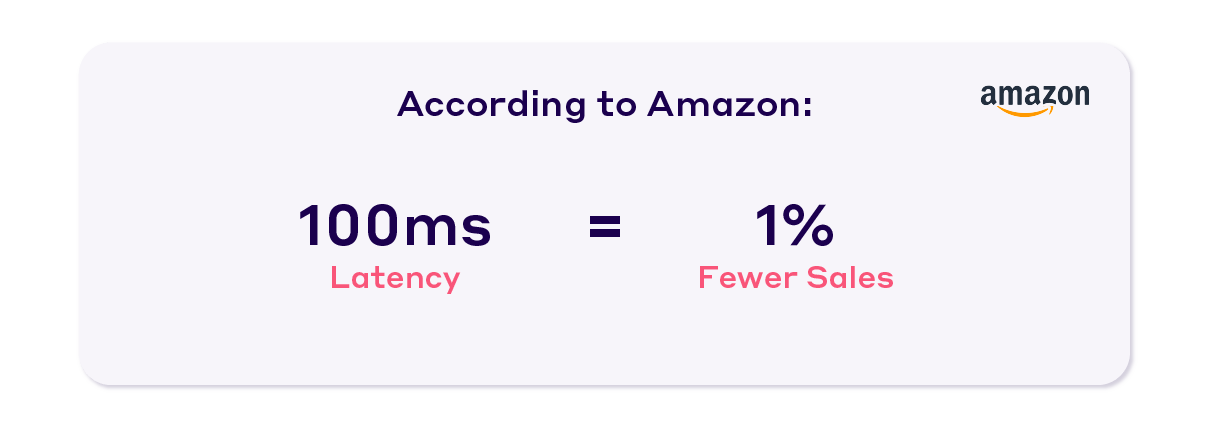
💡 Amazon? They discovered that every 100-millisecond delay in load time cost them 1% in sales.
That’s millions, all lost because their site was just a little too slow.
If the world’s biggest online retailer can’t afford slow load times, you definitely can’t.
Why Is Your Website Slow?
Here are some common reasons:
❌ Large, unoptimized images – Heavy images are the biggest culprits. Big, high-res photos eat up bandwidth, slowing everything down.
❌ Too many third-party plugins – These add scripts and stylesheets, increasing server requests and possibly conflicting with each other, causing errors.
❌ Poor server performance – If your hosting provider isn’t up to scratch, expect slow load times and more downtime during peak traffic.
❌ Excessive animations and scripts – They look cool, but they eat up processing power and bandwidth, slowing everything down.

How to Fix It
- Optimize your images – No one needs a 5MB photo on a page. Use tools like TinyPNG to reduce file sizes without losing quality. Check out our article on easy picture editing web apps.
- Minimize unnecessary scripts and plugins – More code = more load time. Keep things lean.
- Use a Content Delivery Network (CDN) – It makes your site load faster globally by serving content from the nearest server.
- Enable caching – Store commonly used elements so they don’t have to reload every time.
Looking for more ways to speed up your website? Check out our guide on 7 quick tips to speed up your website.
A fast-loading website = happy users.
And in 2025, there’s absolutely no excuse for a slow site.
5. Your Forms Are a UI UX Nightmare

Nothing kills conversions faster than a frustrating form.
I see it all the time, businesses asking for life stories when all they need is an email address. 😩
❌ Asking for too much information
❌ Fields that don’t auto-format inputs (forcing users to type manually)
❌ Confusing or vague error messages
Let’s be real. Users don’t have the patience to fight with your forms. They’ll just abandon them and move on. 😤
How to Fix It
- Only ask for what you NEED. The more fields, the fewer completions.
- Use smart input fields. Auto-format phone numbers, credit cards, etc. Make it easy.
- Break long forms into steps. A progress bar makes it feel less overwhelming.
- Give clear error messages. Instead of just “Error,” explain what’s wrong and how to fix it.

Every extra field you add to a form reduces completion rates by about 10%. Be ruthless about what you ask.
Good UI/UX design makes forms effortless. If filling them out is annoying, users won’t bother.
6. You’re Ignoring UI UX Accessibility

What Is Accessibility in UI/UX?
Website accessibility means ensuring that everyone, including people with disabilities can navigate and use your site easily.
Yet, most websites fail to meet basic accessibility standards, making it difficult for:
- Visually impaired users who rely on screen readers
- Users with mobility issues who need keyboard navigation
- Colorblind users who can’t distinguish between certain colors
Ignoring accessibility isn’t just excluding users, it’s bad business.
Over 15% of the global population has some form of disability. If your UI UX design isn’t accessible, you’re shutting out a huge audience.
Real-World Example: Domino’s Pizza Got Sued for a Non-Accessible Website

💡 In 2019, Domino’s lost a lawsuit because their website wasn’t accessible to blind users. The court ruled that online businesses must comply with accessibility standards. Domino’s had to redesign their website.
Ignoring accessibility isn’t just bad UI/UX, it can cost you legal fees.
How to Fix It

- Use sufficient color contrast. Avoid color combinations that are hard to distinguish, especially for colorblind users. If text blends into the background, it’s unreadable.
- Ensure keyboard navigation works. Not everyone uses a mouse. Some users rely on keyboard shortcuts.
- Add alt text to images. Screen readers rely on descriptions to help visually impaired users understand images.
- Use proper heading structure. Makes content easier to navigate.

Many accessibility improvements help all users, not just those with disabilities. Clear, accessible UI UX design benefits everyone.
7. You Assume Instead of Testing Your UI UX

The most dangerous assumption in UI UX?
“I think users will understand this.”
Too many businesses design their websites based on assumptions:
- “This looks nice, so users will love it.”
- “I think people will know how to use this.”
But without real user testing, you’re not designing, you’re guessing.
Even the best-designed websites can flop if they don’t meet actual user needs.
Your opinion doesn’t matter.
Your CEO’s opinion doesn’t matter.
Only user behavior matters.
Real-World Example: How Airbnb Used User Testing to Fix UX Issues

💡 In its early years, Airbnb was struggling to grow. They dug into their UI/UX and found a major issue:
Users weren’t booking because the rental photos were terrible.
So, Airbnb tried something new: They hired professional photographers to take better pictures.
The result? Bookings doubled.
This simple UX improvement, based on actual user data, turned Airbnb into a billion-dollar company.
How to Fix It

- Conduct usability tests. Watch real users navigate your site and see where they struggle. You’ll be surprised by what trips them up.
- Use heatmaps & analytics. Tools like Hotjar and Google Analytics show where users click, scroll, and drop off. Get a clear view of what works and what doesn’t.
- Analyze session recordings. See user frustrations in real-time.
- Run A/B tests. Try different layouts, copy, or CTAs, and measure what drives better results.
A 5-minute usability test can reveal UI/UX problems you’d never catch on your own.
For more insights on understanding your users’ needs, check out our guide on how web design affects digital marketing.
Why These Rules Matter More Than Ever

In 2025, users have zero patience for bad experiences.
The competition? One click away.
Every frustration point is an invitation to leave.
Every moment of confusion is a reason to abandon your site.
The businesses winning online aren’t the ones with the biggest budgets or the fanciest designs.
They’re the ones that relentlessly focus on removing friction from the user experience.
Remember:
UI is how it looks. UX is how it works.
Both need to be excellent.
How to Apply These Principles Today

Improving your website’s UI/UX isn’t just about making it look good, it’s about making it work efficiently for your users and driving better business outcomes.
UI (User Interface) and UX (User Experience) are what shape the way users interact with your site. A well-designed site keeps visitors engaged, nurtures them into customers, and enhances overall satisfaction.
If you want to take your website from good to great, applying these principles will be your secret weapon.
Here’s how you can apply them today:
- Audit your site with fresh eyes
- Identify your top user journeys
- Eliminate unnecessary steps
- Simplify your messaging
- Test with real users

The ROI on UX improvements? A staggering $100 for every $1 invested.
Don’t wait for users to tell you what’s wrong. They won’t. They’ll just leave.
UI and UX aren’t just design considerations. They’re business imperatives that directly impact your bottom line.
Stop ignoring these foundational rules. Your users (and your conversion rates) will thank you.
Not sure where to start? Our team at Jumix Design specializes in creating websites that not only look great but convert visitors into customers. Learn more about how to choose a web development company in Malaysia or explore our website design services.
FAQs About UI/UX Design
What’s the difference between UI and UX?
UI (User Interface) is all about the visual elements users interact with buttons, icons, and layout.
UX (User Experience) goes beyond that. It’s about the entire journey and how users feel while using your product. Good UI is a piece of the puzzle that contributes to great UX, but UX is much more than just looks. It also covers information architecture, content strategy, and usability.
How much does improving UI/UX typically cost?
The cost varies widely depending on project scope. Small improvements might cost a few thousand dollars, while complete redesigns can cost tens of thousands. However, the ROI is typically excellent, with studies showing returns of 9,900% on UX investments. Learn more about website design costs in Malaysia.
What are some tools to help improve UI/UX?
Popular tools include Figma and Adobe XD for design, Hotjar and Crazy Egg for heatmaps and recordings, UserTesting for usability testing, and Google Analytics for quantitative data. The right tools depend on your specific needs and budget.
How often should we update our UI/UX?
Rather than complete overhauls, adopt a continuous improvement approach. Review analytics monthly, conduct usability tests quarterly, and make incremental improvements based on data. Major redesigns should happen only when truly needed, typically every 2-3 years.
Can good UI/UX help with SEO?
Absolutely. User experience is a direct ranking factor for Google. Sites with better engagement metrics (low bounce rates, higher time on site) typically rank better. Additionally, mobile-friendly design is essential for SEO.
Remember, your website’s UI and UX are fundamental to creating positive user experiences. By following these seven rules, you’ll eliminate frustrations, boost conversions, and keep users coming back for more.
Want to take your website to the next level? Contact us to learn how our team can help transform your online presence.
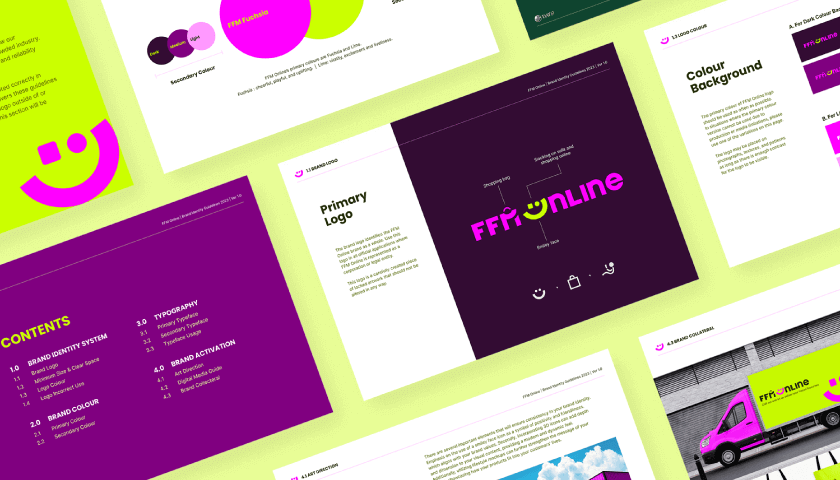

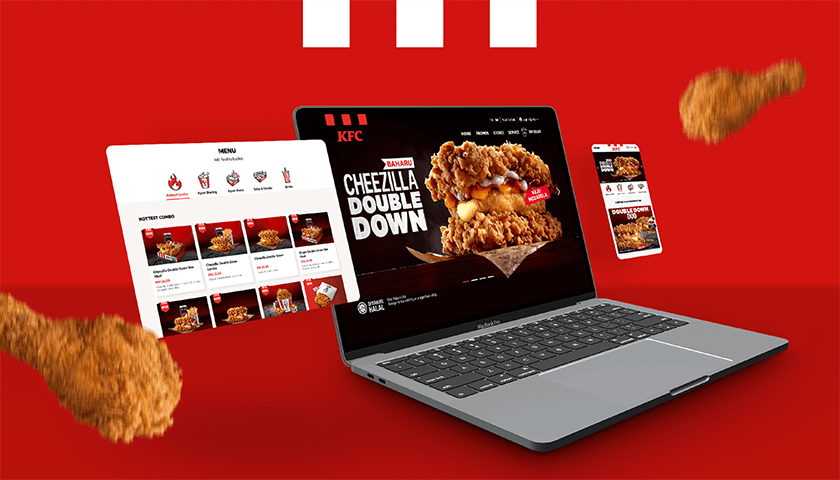


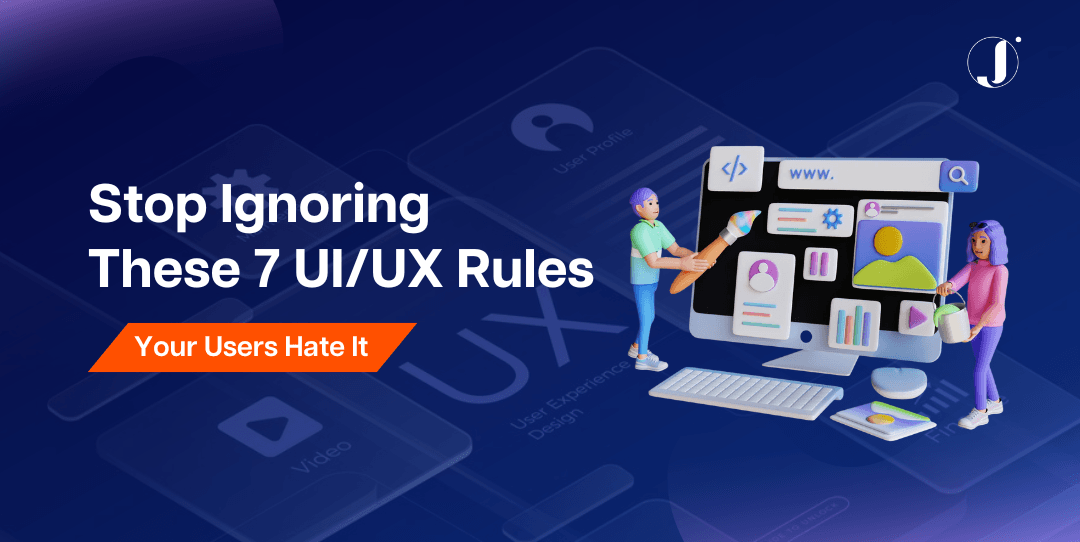


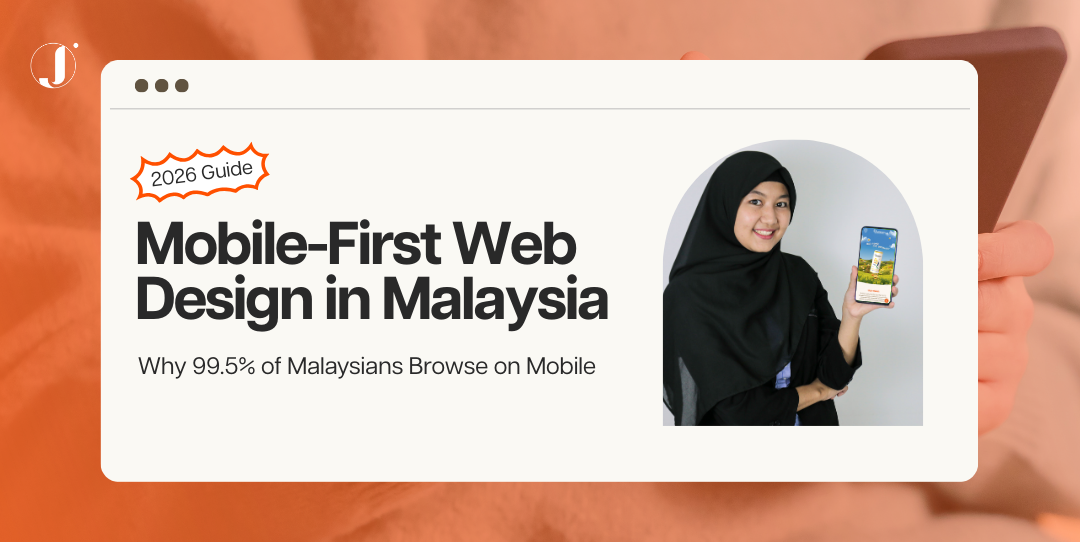


Comments are closed for this article!